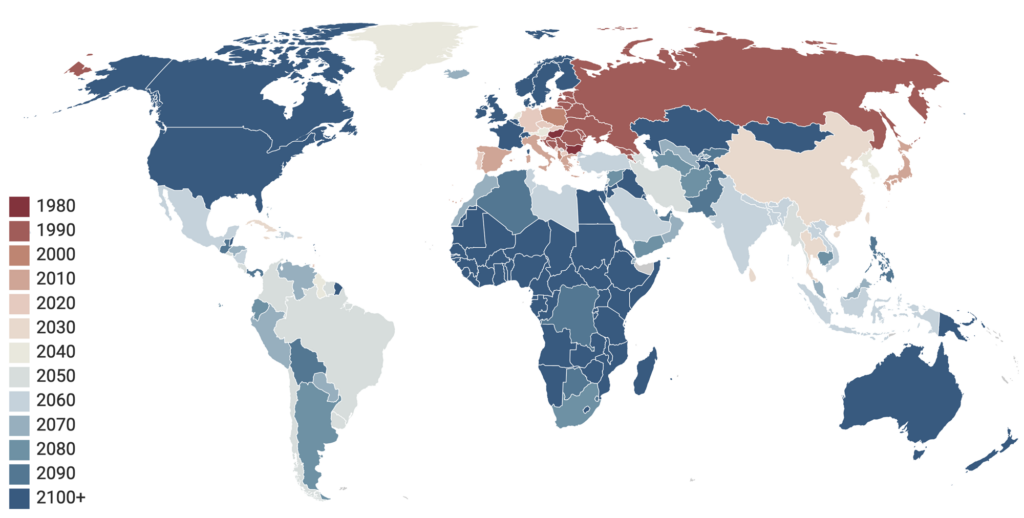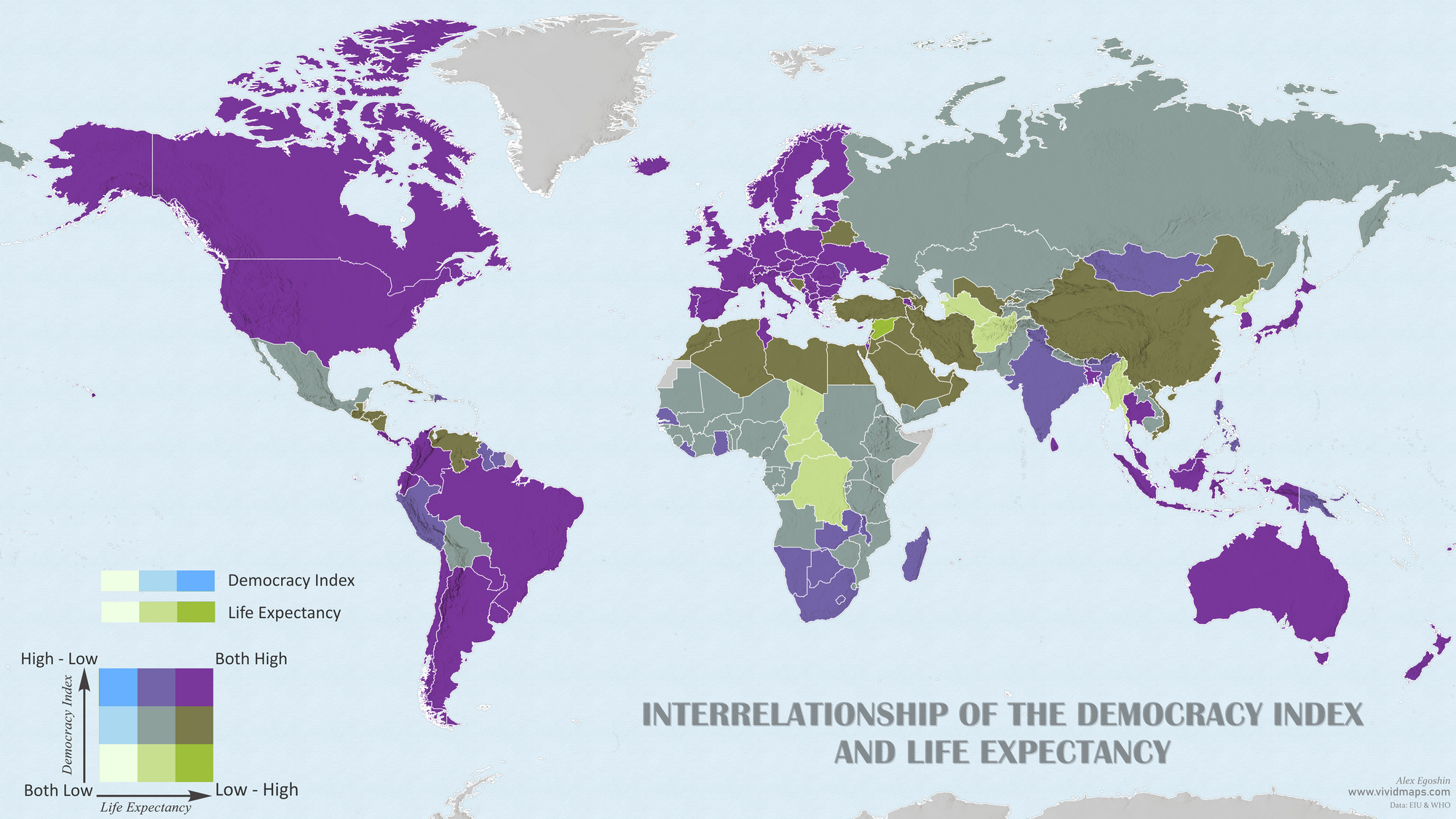When is Each Country Expected to Reach its Peak Population?
For the first time in contemporary history, the global population is supposed to stop growing by the end of this century because of falling global fertility rates. The global fertility rate has continued to decline to 2.3 births per woman. As a result, the global population will peak at around 10.4 billion in 2086.
More than half of the forecasted growth of the global population up to 2050 will be concentrated in 8 nations: the Democratic Republic of the Congo, Egypt, Ethiopia, India, Nigeria, Pakistan, the Philippines, and the United Republic of Tanzania.
The map below shows the decade in which each country reaches peak population.

Most countries of the former Soviet Union and the socialist camp passed their population peak in the 1990s.
Germany, Italy, Spain, Portugal, Greece, Japan, and China have peaked in the 2020s. According to the UN, India will surpass China as the most populous in 2023, overtaking China with its 1.4 billion people.
The high birthrate countries (mainly in Africa) will continue to increase in population past 2100. Developed countries like the United States, the United Kingdom, France, and Scandinavian countries will be the high immigration countries 80 years from now. However, changes may occur over the decades, and other countries attractive to immigrants may appear worldwide.








